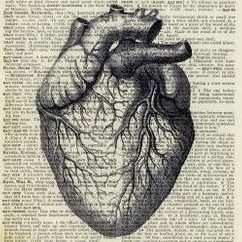
T.S. Eliot’s Idea of the Lit Mag
On October 26, 2018 by adminby Meredith Eilola, 2018-19 Fiction Editor As someone new to the world of literary magazines, I found T. S. Eliot’s “The Idea of the Literary Review” to be a helpful first reading to set guidelines and give warnings for the creation of a literary magazine. Eliot sets clear (although loftily worded) standards for literary magazines

From the Archives: “Unshakable Ink” by Rachel Villa
On October 23, 2018 by adminTattooing is a body modification in which ink is embedded into the dermis using a needle. The epidermis, in time, heals over its now-modified counterpart, trapping the ink in the body. Done correctly–and I have managed to do it incorrectly–tattoos are permanent. The oldest discovered mummy with tattoos dates to over five thousand years. Imprecise

An Interview with Paula Whyman
On October 18, 2018 by adminInterview by James Hancock, 2018-19 Online Nonfiction Editor Paula Whyman’s story collection, You May See a Stranger, explores the life of Miranda Weber. Quick-witted and hyper-observant, Miranda is, as the jacket copy describes, “a hot mess.” In one story, for example, she has a sexual awakening in the display tent of a sporting goods section.

The Alaska Quarterly Review: A Journal Worthy of its Standing
On October 16, 2018 by adminby Abby Gauthier, 2018-19 Social Media Director Just on the edge of some gold-tinged cluster of birches, the title appears in condensed, white font: The Alaska Quarterly Review. This edition, Volume 32, Issue No. 1 and 2, features a cover that seems relevant to the journal’s name: bare trees, packed snow, thickets of shrubs, barrenness.

Book Review: “The Wrong Way to Save Your Life”
On October 11, 2018 by adminby Rebecca Wesloh, 2018-19 Marketing Director What are you afraid of? This is a central question to Megan Stielstra‘s book of essays, The Wrong Way to Save Your Life. The collection was published in August of 2017 with some of the essays previously published in literary magazines, such as Guernica, Midnight Breakfast, and Great Lakes

A Public Space: A Small Museum You Could Hold in your Hands
On October 9, 2018 by adminAlexa Smith, 2018-19 Fiction Editor I find it embarrassingly important to note that I have not had a lot of lit mag experience—and by a lot, I mean zero. But for only twelve dollars, an era of ignorance met its end. The twenty-third issue of A Public Space marked my first dive into the dating pool
